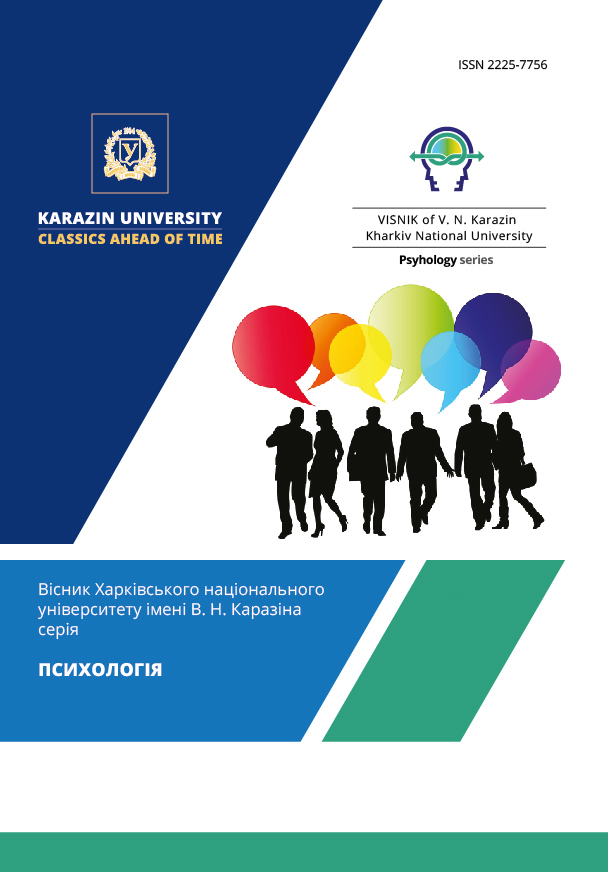Improving the Effectiveness of Learning with the Help of Neurocomputer Interface
Abstract
The article considers modern technologies for reading signals from the human brain and nervous system and selects the optimal technology to improve the efficiency of adult learning with the help of a neurocomputer interface. Existing brain-computer interfaces (BCI) technologies can be divided into invasive and non-invasive. The first, invasive BCIs, are neuroimplants in certain parts of the brain that work on the basis of electrocorticography (ECOG) or intracranial EEG (iEEG) technology and do not require deep intervention in brain structures; or another invasive BCIs, based on intracortical recording technology using implants with electrodes placed in brain closer to the signal source, and required more complicate operation. The second, non-invasive BCI, reads signals from the brain and nervous system and is based on electroencephalogram (EEG). Compared to invasive BCIs with their more accurate signal, transcranial BCIs communicate with the brain through the skull bones, muscles, and all tissues. Their use does not require intervention in the human body. To increase the effectiveness of training, there was chosen a physiotherapeutic method of transcranial electrical stimulation (TES) in combination with a braincomputer interface based on electroencephalography (EEG), as the most accessible non-invasive method of exposure and feedback due to BCI without known side effects to mental functions and personality. The use of brain-computer interfaces, in particular transcranial electrical stimulation in combination with electroencephalography, increases cognitive abilities in learning, including multitasking. This method can also be used to increase the effectiveness of human assimilation of the necessary new digital environments and is used not only for training complex professions, but also for the masses. Side effects on higher mental functions and personality have not been sufficiently studied to recommend or avoid the use of neurocomputer interfaces for widespread use in education.
Downloads
References
References
Asieieva, Yu. (2020). Problem questions of cyber-addictions classification. Psychologia I osobististy, 2(18). http://psychpersonality.pnpu.edu.ua/article/view/211910 [in Ukrainian]
Balboa-Bandeira, Y., Zubiaurre-Elorza, L., Ibarretxe-Bilbao, N., Ojeda, N., Pena, J. (2021). Effects of transcranial electrical stimulation techniques on second and foreign language learning enhancement in healthy adults: A systematic review and meta-analysis. Neuropsychologia, 160. https://doi.org/10.1016/j.neuropsychologia.2021.107985
Baxter, B. S., Edelman, B. J., Sohrabpour, A., He, B. (2017). Anodal Direct Current Increases Bilateral Directed Connectivity during Motor-Imagery Based – Control. Frontiers in Neuroscience, 11. https://www.frontiersin.org/articles/10.3389/fnins.2017.00691/full
Browarska, N., Stach, T. (2018). System to Communicate Disabled People with Environment Using Brain-Computer Interfaces. Biomedical Engineering and Neueuroscience, 150-157. https://doi.org/10.1007/978-3-319-75025-5_14
Browarska, N., Stach, T., Kawala-Janik, A. (2018). Initial Study on Using Emotiv EPOC+. Neuroheadset as a Control Device for Picture Script-Based Communicators. IFAC-PapersOnLine, 51, 180-184. https://doi.org/10.1016/j.ifacol.2018.07.150
Gilula, M. F., Kirsch, D. L. (2005). Cranial Electrotherapy Stimulation Review: A Safer Alternative to Psychopharmaceuticals in the Treatment of Depression. Journal of Neureurotherapy, 9. https://doi.org/10.1300/J184v09n02_02 1
Jamil, N, Belkacem, AN, Ouhbi, S, Lakas, A. (2021) Noninvasive Electroencephalography Equipment for Assistive, Adaptive, and Rehabilitative Brain–Computer Interfaces: A Systematic Literature Review. Sensors. https://doi.org/10.3390/s21144754
Jiang, L., Stocco, A., Losey, D. M., Abernethy, J. A., Prat, C. S., Rao, R. P. N. (2019). BrainNet: A Multi-Person Brain-to-Brain Interface for Direct Collaboration Between Brains. https://arxiv.org/pdf/1809.08632.pdf
Kawala-Sterniuk, A, Browarska, N, Al-Bakri, A, Pelc, M, Zygarlicki, J, Sidikova, M, Martinek, R, Gorzelanczyk, EJ. (2021). Summary of over Fifty Years with Brain-Computer Interfaces – A Review. Brain Sciences. https://doi.org/10.3390/brainsci11010043
Kennedy, P. R., Bakay, R. A. E., Moore, M. M., Adams, K. and Goldwaithe, J. (2000). Direct control of a computer from the human central nervous system. IEEE Transactions on Rehabilitation Engineering, 8(2), 198-202. https://doi.org/10.1109/86.847815
Kloosterboer, E., Funke, K. (2019). Repetitive transcranial magnetic stimulation recovers cortical map plasticity induced by sensory deprivation due to deafferentiation. The Journal of Physiology 597/15. https://doi.org/10.1113/JP277507
Licklider, J. C. R. (1960). Man-Computer Symbiosis. IRE Transactions on Human Factors in Electronics, HFE-1. http://groups.csail.mit.edu/medg/people/psz/Licklider.html
Musk, E, Neuralink (2019). An Integrated Brain-Machine Interface Platform With Thousands of Channels. J Med Internet Res. https://www.jmir.org/2019/10/e16194
Nelson, J., McKinley, R. A., Phillips, C., McIntire, L., Coodyear, C., Kreiner, A., Monforton, L. (2016). The Effects of Transcranial Direct Current Stimulation (tDCS) on Multitasking Throughput Capacity. Frontiers in Human Neuroscence. https://doi.org/10.3389/fnhum.2016.00589
Pfaffinger, K.F., Reif, J.A.M., Huber, A.K. et al. Digitalisation anxiety: development and validation of a new scale. Discov Ment Health, 1, 3 (2021). https://doi.org/10.1007/s44192-021-00003-w
Reinhart, R., Nguyen, J. (2019). Working memory revived in older adults by synchronizing rhythmic brain circuits. Nature Neuroscience 22. https://doi.org/10.1038/s41593-019-0371-x
Taylor, S., Jaques, N, Nosakhare, E., Sano, A, Picard, R. (2020). Personalized Multitask Learning for Predicting Tomorrow's Mood, Stress, and Health. IEEE Transactions on Affective Computing, 11(2), 200-213. https://doi.org/10.1109/TAFFC.2017.2784832
Vlasenko, T., & Pozniak, M. (2020). Digitalisation in creative industry for skill development. Molodiy Vcheniy, 10 (86). https://doi.org/10.32839/2304-5809/2020-10-86-3 [in Ukrainian]




